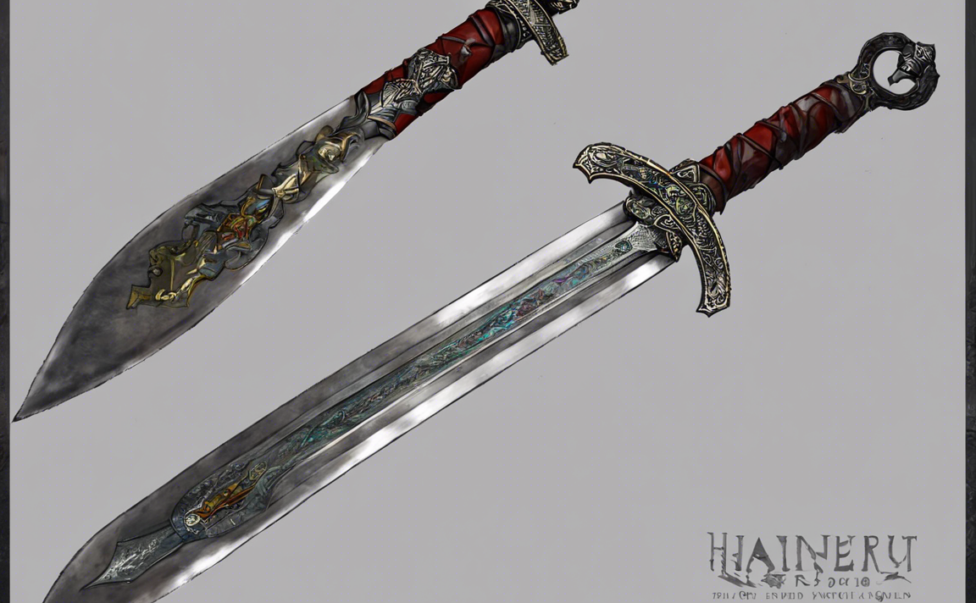Unveiling the Intriguing History of the Hainault Sword
Introduction:
The Hainault Sword, a majestic and ornate weapon, holds a fascinating history that spans centuries and continents. This symbol of power and authority has captured the imagination of scholars, historians, and enthusiasts alike. Let us embark on a journey to uncover the intricate details and legendary stories behind the Hainault Sword.
Origins of the Hainault Sword:
The origins of the Hainault Sword can be traced back to the 14th century in Europe, particularly in the region of Hainaut, which is now part of modern-day Belgium. Crafted by skilled artisans and blacksmiths of the time, this sword was not just a tool for combat but a work of art and a symbol of prestige. Its design and craftsmanship reflected the wealth and power of the noble families who owned it.
Design and Features:
The Hainault Sword is characterized by its impressive size, elaborate engravings, and intricate details. With a blade measuring over 3 feet in length and a hilt adorned with precious metals and gemstones, this sword exudes grandeur and opulence. The craftsmanship displayed in the engravings on the blade and hilt showcases the mastery of medieval artisans and their dedication to creating a truly exquisite piece.
Historical Significance:
Throughout history, the Hainault Sword has been wielded by kings, knights, and warriors in battles and ceremonies. Its presence on the battlefield struck fear into the hearts of enemies, while its use in ceremonies symbolized the authority and sovereignty of its owner. This sword played a significant role in medieval European history, witnessing key moments and battles that shaped the course of nations.
Legacy and Cultural Impact:
The legacy of the Hainault Sword extends beyond its physical form. It has inspired numerous legends and myths, becoming a symbol of chivalry, honor, and valor. Its image has been immortalized in literature, art, and pop culture, cementing its place as an icon of medieval weaponry. The cultural impact of the Hainault Sword continues to resonate with enthusiasts and historians, keeping its legend alive for future generations.
Preservation and Display:
Today, the Hainault Sword can be found in renowned museums and collections around the world. Its preservation is paramount to safeguarding its historical and cultural significance. Museums carefully curate and display the sword, allowing visitors to marvel at its beauty and learn about its rich history. The Hainault Sword serves as a tangible link to the past, connecting us to a bygone era of knights and castles.
FAQs:
1. What is the significance of the Hainault Sword in medieval Europe?
– The Hainault Sword symbolized power, authority, and prestige in medieval Europe. It was wielded by kings and nobles in battles and ceremonies, serving as a status symbol and a mark of distinction.
2. How was the Hainault Sword crafted?
– The Hainault Sword was crafted by skilled artisans and blacksmiths in the 14th century. Its design featured elaborate engravings, precious metals, and gemstones, showcasing the mastery of medieval craftsmanship.
3. Where can the Hainault Sword be seen today?
– The Hainault Sword can be found in prestigious museums and collections around the world, where it is carefully preserved and displayed for public viewing.
4. What stories and legends are associated with the Hainault Sword?
– The Hainault Sword has inspired numerous stories and legends, becoming a symbol of chivalry, honor, and valor in medieval folklore and literature.
5. How has the cultural impact of the Hainault Sword endured over time?
– The cultural impact of the Hainault Sword continues to resonate with enthusiasts and historians, who are captivated by its rich history and legendary status in medieval weaponry.
Embark on your own exploration of the captivating history of the Hainault Sword and uncover the mysteries and legends that surround this iconic weapon from the past.

